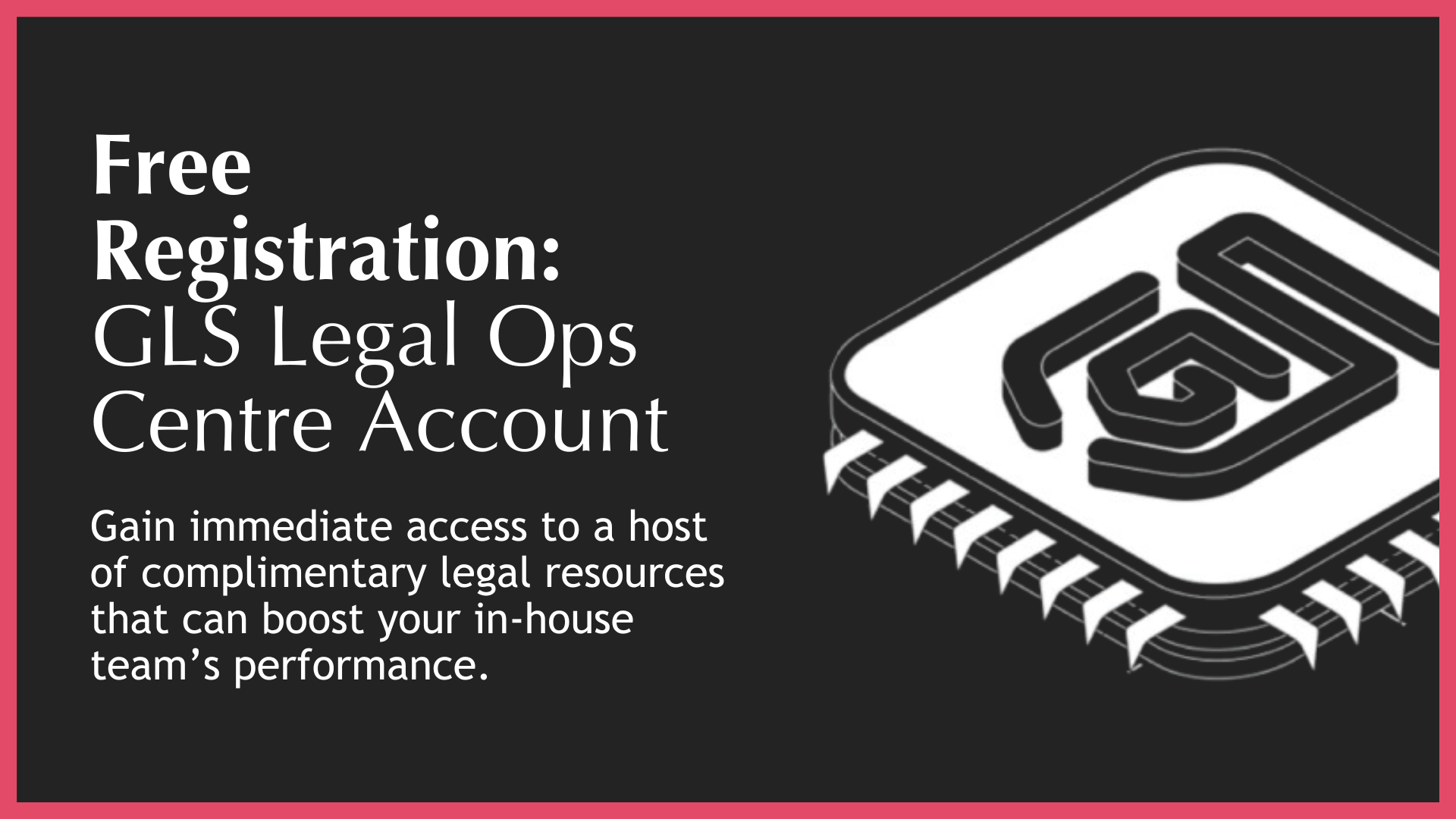Back
In-House Counsel: Build An Effective Internal Client Strategy
22 min • 23 Oct 25

Introduction
Many in-house lawyers appreciate not having to go out into the market to find and maintain clients. However, is that really the case when you go in-house?
Arguably, relationship building is far more important in-house than it is in private practice. For law firms – many clients come and go – but at in-house – you have to live with your (many!) internal clients.
The effectiveness of an in-house lawyer correlates positively with the quality of their internal client relationships. Good relationships are the foundation upon which your “trusted advisor” status is built.
Yet, the permanent predicament of most in-house lawyers is “busyness” – and this can often keep in-house lawyers from managing their internal client relationship with positive and strategic intent.
Whilst a lot has been written about how to develop in-house client relationships, we wanted this Blog to go further than exploring key principles and offer some practical and actionable suggestions.
We felt this was particularly important as developing client relationships and client empathy is a very different skill set than the hard core legal analytic work that most of us tend to excel in.
Note, some of the client strategies we explore in this Blog may overlap but we explore certain concepts in a standalone fashion for fullness of consideration and to maximise potential value release.
If you are ready to build better relationship with the Business through improved client relationships then have a think about the strategies in this Blog and apply them in your in-house environments.
So, let’s jump to it:
In-House Counsel - Day 1 - Start Out Right

It’s Day 1 on the job – so it’s time to let the Business know who you are, what you do, how you can help with and that you are available and looking forward to working with them.
It is critical that you take the time to get to know the Business from top to bottom – organisational-specific knowledge is one of the most valuable enablers of effective in-house advisory.
You should explore how your Business runs, the people who make it run, where it operates, and generally get familiar with its operations, products, services and clients/customers.
Here are some ideas on how to achieve this:
◼️Introduce yourself ASAP to your internal client community
◼️Make every effort to learn what each business unit wants from you
◼️Conducting site visits if that makes sense
◼️Do the above in person wherever possible
◼️You need to speak to all your internal clients within 8 weeks of arrival!
 Observe The Legal Department Availability Compact
Observe The Legal Department Availability Compact
Your clients need you to be available but there must also be clear and meaningful boundaries around what that looks like. This requires commitment from the full legal team.
Firstly, being a lawyer is a tough job. In-house lawyers should commit to a solid 10-hour workday Monday to Friday – that is 50 hours of contribution – and more than enough time to create value.
However, flexibility is required as lawyers may need to be available outside of standard business hours to accommodate time zones and project demands.
However, it’s unacceptable to consistently compensate for resource deficiencies in the legal department by you simply being “constantly available”, particularly outside of business hours.
In our view, appropriate boundaries can be found in a sensible interpretation of the following principles:
◼️Availability should never result in your wellbeing and that of your family’s suffering
◼️You are never available during holidays or on significant family occasions
◼️Calls outside of regular business hours should be taken only when they’re essential, not for convenience
◼️Keep in mind – the only people who will remember your excessive hours will be your family!
Here’s some ideas on how to put this into practice:
◼️Agree with your Business what the Availability Company looks like in your Business
◼️Be really good at your job and a team member who consistently delivers
◼️Recognise that the future of in-house is “value creation” – not hours delivered
◼️Book your holidays and family events well in advance
◼️Keep your project teams appraised of approaching holiday events
◼️Agree with your team that avoidable non-standard availability should generally not be entertained (note this is not always possible with cross border/time zone deals)
◼️Push back consistent disruptions to non-business times proactively scheduling needed calls during business hours
◼️Work for a company where your health and family life are respected
◼️Maintain strong file, matter and project management practices to enable smooth handovers to other team members
Be Responsive To The Internal Client
In-house lawyers aren’t much good to the business if the business can never get time with them. So be responsive to your clients. Make sure you are known for being responsive.
This doesn’t mean that you have to be working 24/7. It simply means that your clients can reach you and talk to you when they need to and/or that you follow up promptly to any missed calls/messages.
Here’s some ideas on how to achieve this:
◼️Be available during business hours – even if you’re working from home
◼️Provide an emergency contact number ONLY to those that need it
◼️Put your out-of-office on if you are in meetings / on holidays etc.,
◼️Set up your voice mail and check it regularly
◼️Respond to all support requests within 24 hours – even if just to acknowledge receipt
◼️Do what is needed to ensure that your clients don’t have to chase you (more on this below)
Understand The Tolerance For Risk
All business entails the assumption of risk. All too frequently, the internal client can accuse the in-house legal team of being too risk averse and deal blockers, not deal enablers. We have all heard this.
Your job is to efficiently enable the Business to do business, in a safe and effective manner. However, what level of risk is considered “safe” or “acceptable” can be an organisation/context specific notion.
As such, you need to get clear alignment with your Business on the level of risk that they are prepared to assume, and then calibrate your advice accordingly.
Here’s some ideas on how to achieve this:
◼️Recognise that “risk” and “doing business” must both co-exist
◼️Ask the Business to identify acceptable business risk parameters – get an institutional position
◼️Get it in writing where possible – Board endorsed or endorsed by delegated power authority
◼️Make sure it is a company position and is not just “what Joe in procurement thinks”
◼️Recognise that it might be market/BU/Client specific
◼️Recognise that standardization of risk is a desirable North Star but may not always an achievable/desirable ultimate destination
Open Up Your Doors (Phones, Emails, Self, etc)
Too often, in-house legal counsel can be accused of being too insular or isolated from the rest of the Business – even when this is far from how the legal team would like to ideally operate.
With remote working on the increase and centrally located teams providing cross border coverage – it can be hard for the legal team to maintain visibility and encourage approachability.
So, you must embrace pro-active strategies to let your internal clients know that you are there and available, regardless of whether you work in the office or from home, or a hybrid of both.
Here’s some ideas on how to achieve this:
◼️Open your door if you are in the office – only close it if you are super busy
◼️Do regular (in person/virtual) roadshows and let your clients know that you are available
◼️Advertise your services – encourage your clients to reach out
◼️Actively promote your availability and willingness to help to the workplace
◼️Always be available during business hours, and responsive outside of business hours (subject to the Availability Compact discussed above)
Make Sure Your Clients Know The Value You Create

There is always a risk that the efforts of the in-house team can be overlooked. After all, as a community, we are not known for our self-promotion!
From time to time however, it is appropriate that you let the internal client know what you have been up to and what your team has actually achieved.
This will definitely improve your relationship construct and drive value recognition. It will also illustrate to the internal client community as to the type of support/challenges you can assist with.
Make your wins visible to the whole organization, so they can appreciate how much you’re contributing.
Here’s some ideas on how to achieve this:
◼️Mention your wins on quarterly key stakeholder catchup (which you should already be doing)
◼️Create a short report for the executive function to review
◼️Be sure to show how your efforts align with Corporate Objectives
◼️Keep your updates short, sweet and tasteful – no one likes a big head
Communicate Effectively
It wasn’t curiosity that killed the cat – it was a lack of effective communications.
Great internal client relationships are built on great communications – there is no escaping this.
Conversely, poor or ineffective communication and delayed response times can have a serious impact on your relationships with your business clients.
Here’s some ideas on how to achieve this address this:
◼️Do some research on available communication techniques – there is a lot of advice publicly available - try resources like the ACC and various other associations of in-house counsel
◼️Talk face to face (if possible), or over the phone instead of emailing
◼️Actively practice being a good communicator – like any skill, it can be acquired
◼️Focus on saying things in as few words as possible
◼️Prepare in advance for key conversations – a few bullet points is usually all it takes
◼️Follow up meetings with email summaries if needed – it’s a good practice and helpful
Be Short & Sweet
Time is short for everyone – we all lead busy lives and are routinely assaulted by torrential floods of communications. If we are to be heard by our clients, we need to be short and sweet.
When we deliver our legal advice to them always be succinct and to the point. Your clients do not need to read lengthy emails or long legal memorandums.
Here’s some ideas on how to achieve this:
◼️Prepare in advance about what you want to convey
◼️Don’t use sentences that run over two lines (ever)
◼️Use words as though they are your last gasps of oxygen – sparingly
◼️Avoid technical and legal jargon – plain English is more readily understood
◼️Never talk for more than 5 minutes if you can avoid it.
 Overcommunicate As A Strategy – When Needed
Overcommunicate As A Strategy – When Needed
Not to deliberately contradict the above recommendation, but when needed, over-communicating with your internal client can be a useful strategy.
Our internal clients generally operate under a constant deluge of information and developments that compete for their limited attention. So, it can be easy for our clients to miss things.
So, on high visibility / really critical matters overcommunicating on the issue/matter is a legitimate strategy – and clients tend to be thankful.
Here’s some ideas on how to achieve this:
◼️Follow up your conversations with an email summary of the key points
◼️Check back in to ensure your points were understood
◼️Follow up to see if there is anything more that you can be doing on the relevant issues
◼️Put the issues on to a key issues list (or create one if it doesn’t exist)
◼️Don’t leave it for too long before sending the reminders
Help Your Clients Embrace Change
It’s important to realise the context in which we advise our clients is a dynamic and ever-changing world/corporate environment. Change is the only real constant.
As such how we do things, when we do things, what needs to be done can all be subject to change. We must positively embrace this.
Being a calm and steady voice helps reinforce your client relationships. Help your clients to deal with these changes, making allowances for their frustrations, and focus on how you can keep the show going.
Here’s some ideas on how to achieve this:
◼️Always assume an “open minded” public face regarding internal changes
◼️Actively consider how the change can help you improve the client relationship
◼️If the change negatively impacts the relationship – find ways to address this ASAP
◼️Try and understand the drivers behind any changes – there is usually a good reason
Make Your Internal Client Look Good

You need to always work to make your client look good. There are many ways to do this beyond just providing them good advice.
The key here is to find ways to partner with your business client and reinforce the notion that you are a helpful resource that they can count on you to help them succeed.
Here’s some ideas on how to achieve this:
◼️Actively consider how you can help your internal client best succeed with their role
◼️Know that the gesture of offering to help is ultimately more valuable than what you offered
◼️Attribute positive deal developments to the internal client when appropriate
◼️Be prepared to take a holistic view of what might help – e.g. working on the language, helping to structure a presentation, working on a strategy, just being a second set of eyes/ears
◼️Consider things that are easy for you to deliver so as to not unnecessarily add to workloads
Be Humble … Your Greatness Is Not In Question
As a lawyer, you are used to being one of the smartest people in the room. Let’s face it – very few could actually get the marks needed to get into law school.
Whilst we should be proud of this – and rightly so – we do need to act with a certain level of humility as you will regularly encounter “I cannot believe you just did that” scenarios.
And, no one likes a “big head” – so take note of the tones that your internal client relationships will best respond to and operate accordingly.
Here’s some ideas on how to achieve this:
◼️Always think carefully about what you want to say
◼️Make it a rule to never to criticize your colleagues
◼️Avoid being braggadocios
◼️Try yoga or hitting a punching bag
◼️See the point below about “biting your tongue”
Spot Problems/Opportunities
As lawyers, we have visibility of a very large playing field – we are involved in live markets and sectors as they happen. It may be that we can uniquely spot opportunities and threats to our Business.
The client relationships will be enhanced by a mindset that you are part of the team – so be on the lookout for things that can hurt or help the Business, and then pass them on to the right people.
Obviously, stay in your lane, but if there is something of obvious interest, it will likely be well received if you flag it to the team … and doing so cements your status as part of the team.
Here’s some ideas on how to achieve this:
◼️Consider flagging newsworthy developments about competitors
◼️Consider how new/upcoming laws might impact your client
◼️Make this an agenda item that you focus on during your client catch-ups
◼️Don’t over-play this strategy – a few “spots” here and there is all that’s needed
 Hold Your Tongue If You Have To
Hold Your Tongue If You Have To
As an in-house counsel there will be situations where you will just have to refrain from telling the internal client what you are really thinking – even when it offends key principles that drive excellence.
The reality is that you will encounter situations where you just cannot understand how sloppy, careless, reckless, lazy or even stupid your internal client has acted. Yup – we’ve all been there!
Take comfort in the fact that those “departures from commonsense” are partly responsible for keeping us in jobs – but that in reality, lawyers generally operate at much higher standards than most others.
Here’s some ideas on how to achieve this:
◼️If you are angry, count to 10,000 before speaking
◼️If you are about to send an angry email, just save it and re-read it in the morning before sending it
◼️Take up mixed martial arts
◼️Buy a companion dog
Ideation Is Part Of Your Job
“Earlier is better” is the prevailing sentiment in terms of when the in-house lawyer should advise on projects – but quite often the internal client fails to remember this.
As such, consider cultivating your commitment to “ideation” – make it known, and demonstrate, that you are a positive helper to your internal clients at the ideation stage.
If you become a member of the internal client’s ideation team – late involvement in projects will rapidly become less of an issue. Oh, and this is a great example of adding value to your client relationship.
Remember too – ideation – is just a fancy word for “collaborate”. Collaboration is a superpower that high performing teams use to drive effective in-house client relationships.
Here’s some ideas on how to achieve this:
◼️Get new projects on your radar through regular client catch ups
◼️Ask to be involved in ideation early
◼️Dial into how those sessions operate and how to contribute
◼️Just remember – these are ideation session where people are exploring “possibilities”
◼️Be careful not to be too quick to shoot down your team member’s ideas
Train Your Clients to Help You to Help Them
Few things are more effective at reducing your in-house workload than “training” the Business on how to help you to help them.
Every in-house team should have a strategic internal client training program defined and actively deployed – its contribution to developing effective client relationships cannot be overstated.
Holistic internal client training is a must and should include:
◼️Training on how to use/instruct the legal team
◼️Key issues around regular work types and how to deal with them
◼️How to get deals approved internally
◼️Introductions to basic legal concepts
Here’s some ideas on how to achieve this:
◼️Ask your client what training they would like
◼️Focus on training topics that will make the client better at their jobs
◼️Consider training as relationship building exercises
◼️Include some bonding activities around the training sessions
Consider A Word Other Than “No”.
Clients expect you to be able to get things done and find answers. Using a flat “no” can instantly result in the internal client pulling up the perception drawbridge.
On hearing “no” your internal client may consider that: (i) you are not willing to help, (ii) you are not good enough to help, or (iii) you are not supportive – none of which is helpful to your relationship.
Use a word other than “no” when talking to your internal clients. You can say “no” through other means.
Here’s some ideas on how to achieve this:
◼️Try to go a full day without saying the word “no”
◼️Consider everything as a “yes” with stated qualifications
◼️Be mindful of what “no” might be perceived to mean by your client
◼️If it is genuinely a “no” situation – try even hard to see how to make it a “yes” – this will naturally extend your practical and innovative advisory potential
Invest In Legal Operations
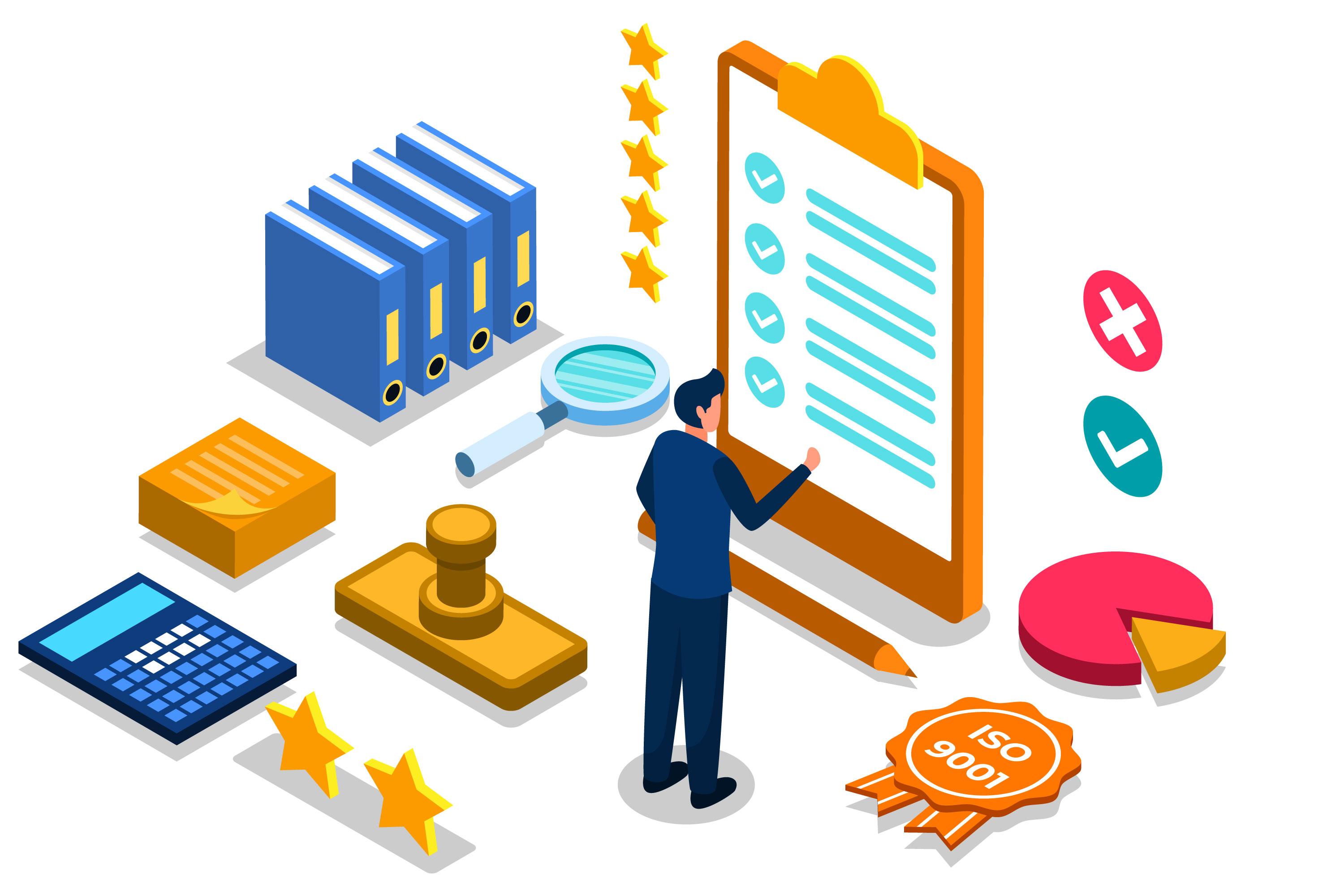
Performing tasks that could be handled by non-lawyers can be a major time drain on an-house legal team’s capacity, leaving them with less time to provide strategic support to the internal client.
Investing in legal operations can go a long way toward making your legal department more efficient and provide insights into how it functions – which ultimately can assist you to focus better on the client.
In-house lawyers should be focused on delivering value to the Business and their internal clients. Legal operations competency is becoming an increasingly vital enabler of better client relationships.
Here’s some ideas on how to achieve this:
◼️Recognise that legal ops doesn’t necessarily mean separate headcount
◼️Read the GLS Ultimate Guide to Legal Operations
◼️Observe RPLV Legal Ops Decision Making
◼️Adopt a legal ops mindset
Use Technology to Reduce Legal Bottle-Necks
One of the biggest complaints about legal departments is that they create bottle-necks. One effective way to help remove that perception is by exploring how safe tech can help.
There are numerous simple processes inside an in-house legal team that lend themselves to, for example, process automation that would improve efficiency and speed up work.
Additionally, certain simple contracts, like NDAs and Purchase Orders, can easily be automated, allowing safe and efficient “self service” by in-house clients..
Here’s some ideas on how to achieve this:
◼️Look for safe and cost effective technologies
◼️Only implements solutions that are guaranteed to work
◼️Consider implementing a pre-approved contract kiosk
◼️Focus on simple document / form types in the first instances (NDAs, Purchase Orders, etc)
◼️Consider automating basic workflows
Be Seen To Proactively Control Outside Costs
Sophisticated in-house counsels are applying a wide range of cost management strategies, approaches, and tools to manage these rate increases.
For many businesses, the internal client will bear the cost of external fees so make every effort to ensure that you try and mitigate those costs.
Work with your internal clients on how to mitigate those costs, let them see you in action, knowing that it is the responsible thing to be doing, and that it is building depth to your internal client relationship.
Here’s some ideas on how to achieve this:
◼️Observe good practice around external counsel costs
◼️Share with the client what they can be doing to manage costs
◼️Keep the client updated on the costs burn rate
◼️Impose sensible Guidelines for External Counsel
 Operate Off The Front Foot
Operate Off The Front Foot
In-house counsel must play off the front foot and in doing so, keep the internal client on the back foot – the internal client must never be chasing you.
You must always chase your client - pre-empt their needs, follow up in a timely fashion, under commit and over deliver on the timing front (where possible) and effectively control the relationship.
The above suggestion might seem to be adding to your already full plate, but the reality is that by doing so you create an environment that is conducive to your success – fewer surprises, happier, and more understanding clients.
Here’s some ideas on how to achieve this:
◼️Commit to never being chased by a client again
◼️Set up automatic routine to perform chasing emails
◼️Maintain and use a daily matter management index to track outstanding projects
◼️Run a transparent matter management “to do” list so you can delegate effectively
◼️Brief in “follow up” as a recurring “to do” activity
◼️Utilize practice/management system if available (the above does not require them)
Being Helpful Can Also Get You What You Want
Obviously, being helpful is a welcomed characteristic of a good internal client relationship. However, being helpful is a tool that goes beyond being easy to deal with.
Consider this – you have delivered important advice to the internal client who has offered to convey it to the other side on the contractual negotiations. The points are complex and delicate.
Why leave it to chance that your internal client can make the case effectively? Why not draft an email that they can send straight to the counterparty on the basis of offering to be helpful.
So, be helpful when you can, and recognize that being helpful is also a strategic tool you can use to attain desired outcomes.
Here’s some ideas on how to achieve this:
◼️Actively think about how you can help manage difficult matters
◼️If you think you should be delivering the message – consider drafting it/offer to do it
◼️Recognise that people are generally receptive to offers for help
◼️Do not overplay the offer to help otherwise it will become “expected”
Follow Ups And Check Ins
This point permeates through pretty much every recommendation in this Blog, and as such warrants standalone billing.

You need to operate on the front foot – proactively and diligently. Your life must be about following up, checking in, updating and finding out what is next.
Start doing this and keep doing it for the rest of your career. Never let the internal client chase you. No one likes to have to chase and no one likes last minute surprises when it comes to delivery timelines.
Here’s some ideas on how to achieve this:
◼️Make following up on everything you send out the “normal”
◼️Run your own SLAs in terms of your follow ups
◼️Schedule your follows up in your diary at the time of sending out your email
◼️Try calling – it’s faster than sending an email
◼️Set aside two 30-minute blocks each week to follow up on all your matters
Know Your Business
You cannot truly align with your internal client unless you know your Business. You must invest in understanding what your internal client’s business needs to be successful and align with the same.
You should also try and develop broader perspectives by viewing things through the eyes of your client. Try being a businessperson that happens to be a lawyer, and see what their world looks like.
Knowing your Business will allow you to more efficiently graduate from “overly legal answer” to a more “practical” advice that can be efficiently implemented in the context of your Business.
Here’s some ideas on how to achieve this:
◼️Try being a businessperson, who is also a lawyer, not just “the lawyer”
◼️Seek out “day in the life of your client” experiences
◼️Attend Company briefings
◼️Attend new business/product launches
◼️Read all your corporate materials and available reports
◼️Tap into sector interests groups
Not Everyone Will Be Happy.
So what. Do you get it?
Accept it. Keep your eyes on the prize – which is doing your job well.
Here’s some ideas on how to achieve this:
◼️Know that you cannot please everyone – so don’t try
◼️Different views means diversity – and diversity is generally a positive force
◼️Use disagreement to stress test the robustness of your positions
◼️Don’t be afraid of someone who disagrees with you.
◼️Focus on doing your job
It’s Okay If The Business Doesn’t Listen To You
Your internal client relationships will drastically improve if you don’t take their, at times utterly dumbfounding, decision making personally. Some clients are reckless, others are just smarter than us.
A business could have good reason for not following your advice, even when you know it makes sense from a legal risk perspective. Legal considerations are not the only business considerations.
Your job is to give good counsel and if the Business doesn’t follow it – so be it. Of course, if you believe that a catastrophe awaits as a result of your advice being ignored – escalate appropriately.
Here’s some ideas on how to achieve this:
•◼️Focus on your job – identify risks, create options, and deliver strong counsel
•◼️Keep good files notes – that’s part of the job
•◼️Be professional – move on to the next project with a smile on your face
•◼️Go out and spend some nice time with friends and family
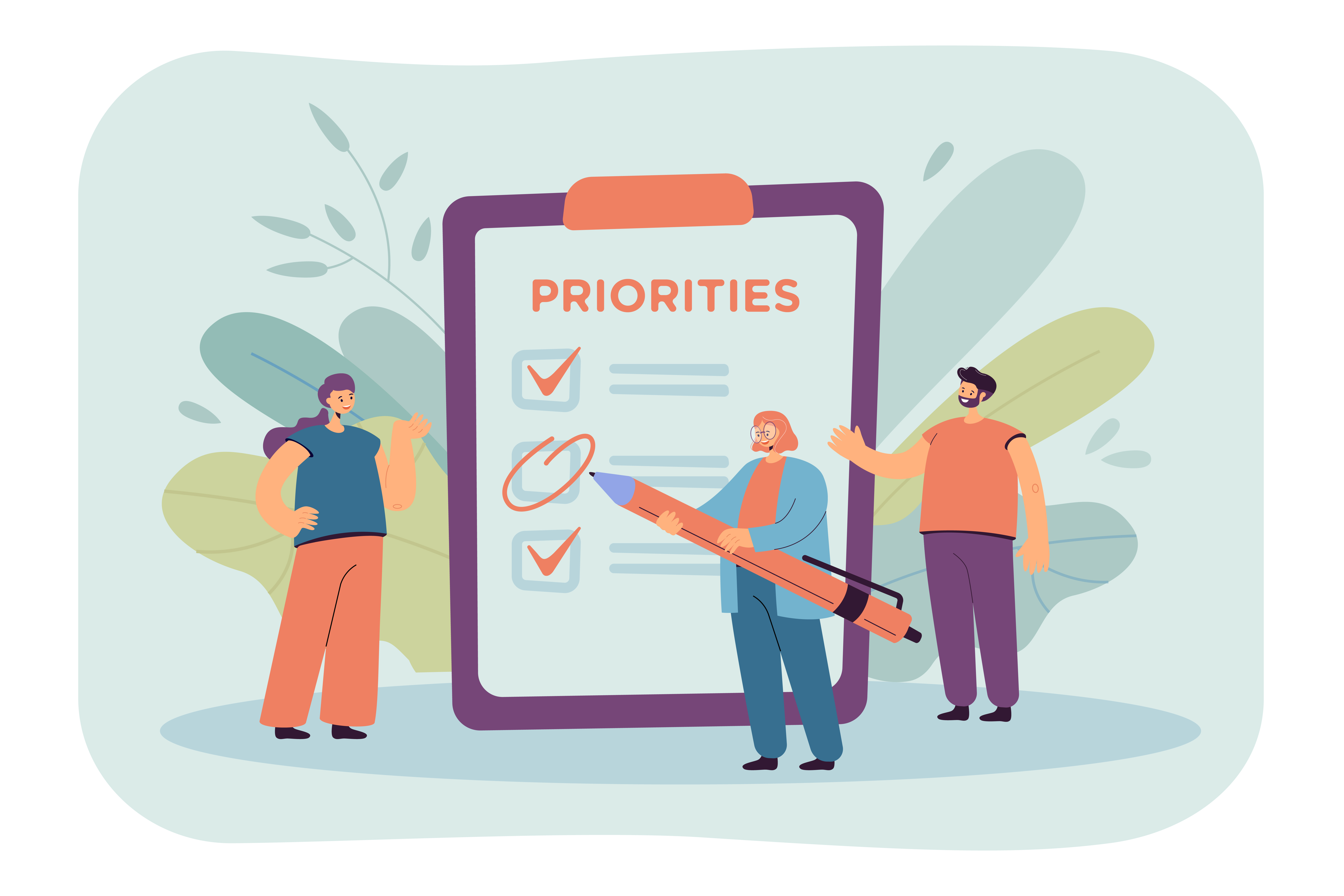 Prioritize Properly
Prioritize Properly
You cannot do everything the internal clients need of you, so you must develop high quality prioritization skills. This is an essential in-house survival skill that must be developed
Are you prioritizing based on what just arrived in your email, your least/preferred in-house client, the most demanding/senior client, the most complex task, or the easiest task to check off?
You need to be prioritizing based on what’s important to the internal client, and you need to invest in understanding what that is. As above, you cannot make everyone happy – so do what is important.
Sometimes there are exceptions – for example, when the Business Owners makes a request that involves inefficiency – you might need to just go with the flow. Good judgment will be required.
Here’s some ideas on how to achieve this:
◼️Every client would like their work to be done yesterday
◼️Know what the Business values
◼️Track instructions correctly
◼️Process instructions according to agreed SLAs
◼️Observe “red flag” review protocols – but police them carefully
◼️Speak directly to clients if they kick up a fuss
◼️Use Playbooks
Playbooks create smarter and more efficient ways for your internal clients to work. Produce them for areas where it is reasonable to expect that they can, with guidance, operate more autonomously.
Playbooks do not put-up barriers between you and your internal client – they simply give your internal client what they need to get on with their jobs – whilst filtering your dealings with them to more strategic matters.
Any team operating without playbooks designed for direct internal client usage is wasting opportunities to improve internal client relationships, not to mention the legal team’s capacity.
In-house clients don’t want to have to wait for legal team comments/feedback – if they could possibly move things forward within clearly defined guardrails. Frankly, Playbooks are essential.
Here’s some ideas on how to achieve this:
◼️Make (or buy) Playbooks for all of your basic agreements
◼️Focus on high utility Playbooks (e.g. for recurring legal issues)
◼️Review our article on Playbooks right here.
◼️Accept that Playbooks are in your future
Keep It Simple
We are the navigators of complexity – it is excusable for our internal clients to be stumped by what needs to be done – our job is to make things simple for them – no matter how complex.
Sure, somethings that we must do with the client are complicated – but how you deal with that complexity should be made simple.
For every interaction you need to have with your internal client – consider how you can simplify the steps they need to take to give you what you need.
Here’s some ideas on how to achieve this:
◼️Think about what you want to convey first
◼️No sentence you write should be more than 2 lines
◼️Keep to one idea per sentence
◼️Spend your words like they are your last dollars
◼️Accept that it takes a bit more effort to be succinct
◼️Practice being succinct – it gets easier
Do The Face Time
Let’s face it – humanity is retreating into a world of emails, DMs, SMS, WhatsApp, etc. The nuances of face-to-face communications are being discarded and people are losing the art of communication.
In-house counsels must be expert communicators – no exceptions. So, a Golden Rule is call first – email later. Call/visit first … and only email if you have to (or to confirm what you discussed).
There are zero exceptions to this. If you want to have a relationship with your internal clients then you have to have a relationship. Email/Teams Messages etc., are not real relationships.
Here’s some ideas on how to achieve this:
◼️Stop texting and typing
◼️Pick up the phone or walk around and see your clients
◼️Grab a coffee on the way.
◼️It’s called “talking” – reacquaint yourself with this endangered artform.
Make Realistic Promises
More highly prized than you saying “yes” to the internal client is your “track record” of delivering on time. Only make commitments that you can realistically keep.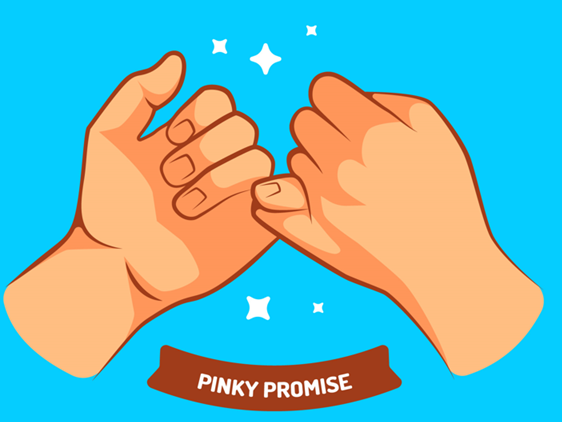
Sure, periodically we must do the impossible (i.e., several times per day), but as a rule, ensure your promises are genuinely realistic.
Prove that your “words” are the ones that count through dependable actions.
Here’s some ideas on how to achieve this:
◼️Keep your commitments realistic
◼️Build in a 25% delay margin – see what that looks like
◼️Under-commit and over deliver
Align Your Priorities
If you want to be considered as relevant then you need to focus on what is relevant. You need to align the services you offer to the realization of your internal clients’ goals.
This means ceasing to merely reacting to their demands, and instead, invest in understanding what your internal clients needs to achieve and calibrate your service offerings accordingly.
If you understand what is truly important to your client – it will help you to provide a useful filter over the work that you do. It will enable you to make far better prioritization decisions.
Here’s some ideas on how to achieve this:
◼️Sit-in on business planning and budgeting meetings
◼️Communicate regularly to ensure clear expectations
◼️Continuously adapt and evolve to meet evolving needs
◼️Read business planning documentation (where appropriate)
Get Your Documentation Right.
Documents don’t make deals, but well drafted transaction documents do create massive efficiencies.
Stop serving up overly complex and sub-optimal documents. Your templates should reflect what your internal client can expect from you.
If your clients don’t like dealing with your documents, then they probably will begin to dislike dealing with you.
Your documents reflect you – and if they don’t – then fix your documents ASAP! You cannot blame your predecessor for their condition - you work with these document every day so it is up to you to fix them.
Here’s some ideas on how to achieve this:
◼️Ask your clients what they think of your templates – run a desk top survey
◼️Target any contract over 20 pages for a language reduction exercise
◼️Target any contract with sentences that run over 3 lines for verbosity removal
◼️Use plain English drafting – all the time
◼️Upgrade your documents steadily over time
◼️Start with your most commonly used agreements
◼️Reach out to GLS for our Best Practice Template Library Guide
Decide Who Wants A Build Business Relationship
Some internal clients will welcome having you as a sounding board on the tough issues and a valued partner in their long-term success. Others will not.
Use your EQ to decide who within your internal client community does it make sense to make a concerted effort with to build super effective client relationship?.
Here’s some ideas on how to achieve this:
◼️Consider who the really important stakeholders are
◼️Gravitate towards those that want to work with you
◼️Win over key stakeholders
◼️Identify like-minded clients who similarly believe in constant transformation and improvement
◼️Run constant cost benefit analysis on the relationships that warrant extra effort
 Build The Trust – And This Takes Time.
Build The Trust – And This Takes Time.
Your internal client wants nothing better than for you to emerge as a trusted advisor, but this cannot and will not happen overnight.
Building trust takes time and you will need a long-term strategy to do just that. Fortunately, like any task, it can be broken down into small easy-to-take steps that should be taken consistently.
Add value to your client consistently, be accessible, get it right, deliver it on time, be efficient, go that extra-mile, and get ahead of their needs whenever you can. Eventually, the trust levels will grow.
Here’s some ideas on how to achieve this:
◼️Be good at what you do – focus on delivering
◼️Trust must be earned, it cannot be taken
◼️Build trust ahead of any potential crisis
◼️Focus on earning trust at every stage of your in-house career
◼️Building trust is a slow grind that you must embrace
Good Customer Service Is Memorable In All Walks Of Life
Great customer services are memorable – in all walks of life – including in-house. The ability to deliver great customer services in today’s corporate culture is easier than ever.
Call, don’t email. Visit in person when you can. Give actionable advice. Be on time. Acknowledge requests. Provide pro-active updates. Ask how you can help. Ask for feedback. Take the extra step.
Remember this – few clients will have the skill set and experience to rate your legal abilities – but all of them will know how to instantly recognize both “good” and “bad” customer service.
Here’s some ideas on how to achieve this:
◼️Focus on the small things – they’ve always been what really matters
◼️Deliver on responsiveness and availability - be good at internal customer service
◼️Invest in understanding your internal client – spend time with them
◼️Consider how you can make the client’s life easier
◼️Draw inspiration from good customer service department experiences you might have had
◼️Follow the tips in this Blog!
Dish Out The Tough-Love When Needed
Whilst it has been said that you should treat all of your clients as if they are your company’s CEO, some clients are better than others, and some need a little bit of “tough love”.
If your client is not following the engagement practices that allow you to meet their needs efficiently, they need to know this. You must police your engagement protocols.
It is obviously incumbent upon you to communicate what you require of your clients, but once this is done you need to also reinforce and encourage those practice regularly, so the clients conform.
Here’s some ideas on how to achieve this:
◼️Ensure you have a written client engagement protocol
◼️Tell your clients what you expect of them
◼️Pull them up when they are not following protocol
◼️Deliver excellence at every turn whenever your clients do follow protocol
Toughen Up – Being An In-House Lawyer Is A Tough Gig 
Law is a tough profession, and it is the domain of those tough enough to do it. Whilst we might not be lumberjacks swinging an axe in the depths of winter, not a lot of people can do we what we do.
Lawyers get paid well, our kids go to private schools, we get good medical, we do interesting things, and are often an important part of the teams that make things happen.
The trade-off is that we have to work hard. If you want a 9-5 job with an hour for lunch – work at Walmart.
This is not inconsistent with our points about wellbeing above – the baseline capacity for dealing with tough situations for a lawyer is and should be far higher than most professions.
It is as simple as this - if you want to be in-house then you need to be willing to join the ranks of a tough & hardy community - and, you’ve got to want to be there.
Here’s some ideas on how to achieve this:
◼️Know what you are signing up for if you are just entering the profession
◼️Be the one that is calm under fire - the industry recognises it
◼️Deliver on what you signed up for – consistently
◼️Enforce the boundaries that exist around your Availability Compact
◼️Manage job stress through appropriate strategies – for example, look at the GLS In-House Wellbeing Series
◼️Remember that ours is a hard-working profession and we should be proud of that
We Will Say It Again – “Know The Business!”
The value of the in-house counsel is commonly considered to reside in the domain of legal expertise, but it rapidly takes on a new level of value when married with in-depth business knowledge.
You can’t be a trusted partner if you don’t understand your client’s business, how it’s structured, what are the key challenges and where the company is headed.
The more you can weave together your knowledge of the law with your knowledge of the Business, its clients and customers, and its employees and teams, the more effective and valued you will be.
So, this might mean investing your own time to do site visits, meet key folks and perhaps even meet your business’ customers … and above all, be curious about what your Business does and how.
Here’s some ideas on how to achieve this:
◼️Immerse yourself in the businesses operations
◼️Learn about the industry and market dynamics
◼️Familiarize yourself with your Businesses key customers relationships
◼️Analyze financial and strategic objectives
◼️Collaborate with Business teams on projects
 Actively Listen
Actively Listen
Listen. There is a big difference between listening for an opportunity to start talking, and listening to understand what is being said. Try the latter. It is a game changer.
Here’s some ideas on how to achieve this:
◼️Focus on what your client is saying
◼️Repeat back to them what you think the client has told you
◼️Ask questions of the client to confirm your understanding
◼️Keep good notes
◼️Map back what you have learnt to what you know your client’s priorities to be
Ask For Feedback
You must regularly ask for feedback. Doing so allows you to understand desirable working preferences, proactively address issues, and sometimes provide an outlet for a client to vent – which can be healthy.
The worst thing that can come out of a feedback request is that your internal client knows that you care about their needs and what you do.
Feedback is a fuel for a high-performing in-house legal team. So actively seek and engage your key clients and encourage them to provide constructive feedback on how you and your legal team can better serve them.
Here’s some ideas on how to achieve this:
◼️Schedule regular catch-up chats
◼️Develop a standard catch-up schedule with key stakeholders
◼️Consider a bi-annual legal team desktop surveys – (but keep them short)
◼️Act on the feedback you are given
◼️Look for feedback on specific projects and on a regular basis
Fix Your Mistakes Properly And Quickly
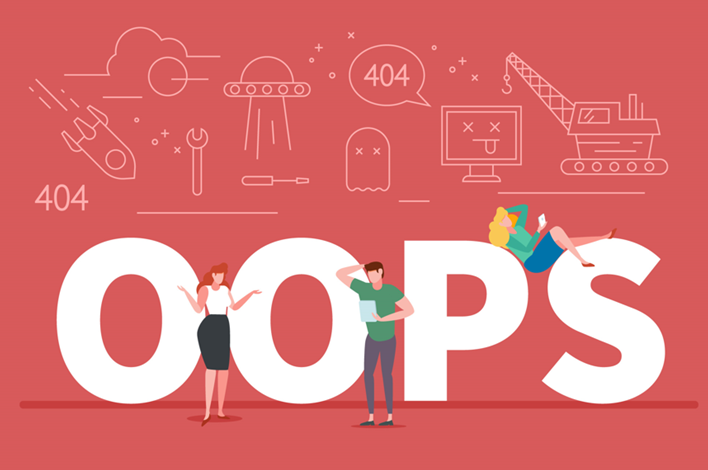
No one is perfect; mistakes can happen. When a mistake happens – your client will be influenced by how you work to address the issue. A client will be far more forgiving if a great relationship exists.
Here’s some ideas on how to achieve this:
◼️Recognise that mistakes happen – much of our job is fixing up avoidable mistakes
◼️Focus on emphatic problem correction where possible
◼️Own your mistakes early on
◼️Own your mistakes even if the client is not aware of them
◼️Be confident that professionally “owning a mistake” ultimately builds trust within your client relationships
Focus On The Long Term
Work on the basis that developing good relationships takes time to develop.
Ideally time in the trenches, time under pressure and time during which you consistently deliver success.
Here’s some ideas on how to achieve this:
◼️Develop a client specific relationship development plan that is simple to implement
◼️Challenge yourself to do a little something to build your relationships every week
◼️Consider that it typically takes at least 12 months to develop a good working relationship
◼️Focus on opportunities to engage with your client – formal and informal
◼️Observe the recommendations in this Blog!
Always Be A Pleasure To Work With
You should always be a pleasure to work with – even though that might not always be how you feel/seem possible. Try and deliver a great customer experience whenever you can.
Here’s some ideas on how to achieve this:
◼️Project a positive attitude
◼️Develop really effective communication skills
◼️Make reliability your personal brand
◼️Leverage the power of effective collaboration
◼️Be flexible and adaptive when needed
Conclusion For Your Legal Department
Good internal client relationships do not happen by accident - you need to develop an effective internal client strategy and consistently implement it.
By following these tips with some determined application, there is every chance that you will become a valued team member and enjoy productive, fruitful, and enjoyable client relationships.
Ready To Transform Your Legal Team?
Please check out the GLS solutions and know-how resources listed on the right side of this page – they might assist your legal team with the issues explored in this Blog.
© The GLS Group - Law Rewritten

The GLS Legal Operations Centre
Register to access your complimentary Day 1 Resource Stack packed with legal team performance resources.

GLS Ultimate Guide To Legal Operations
Download this and read it thoroughly and regularly. It is a wonderful transformation companion.
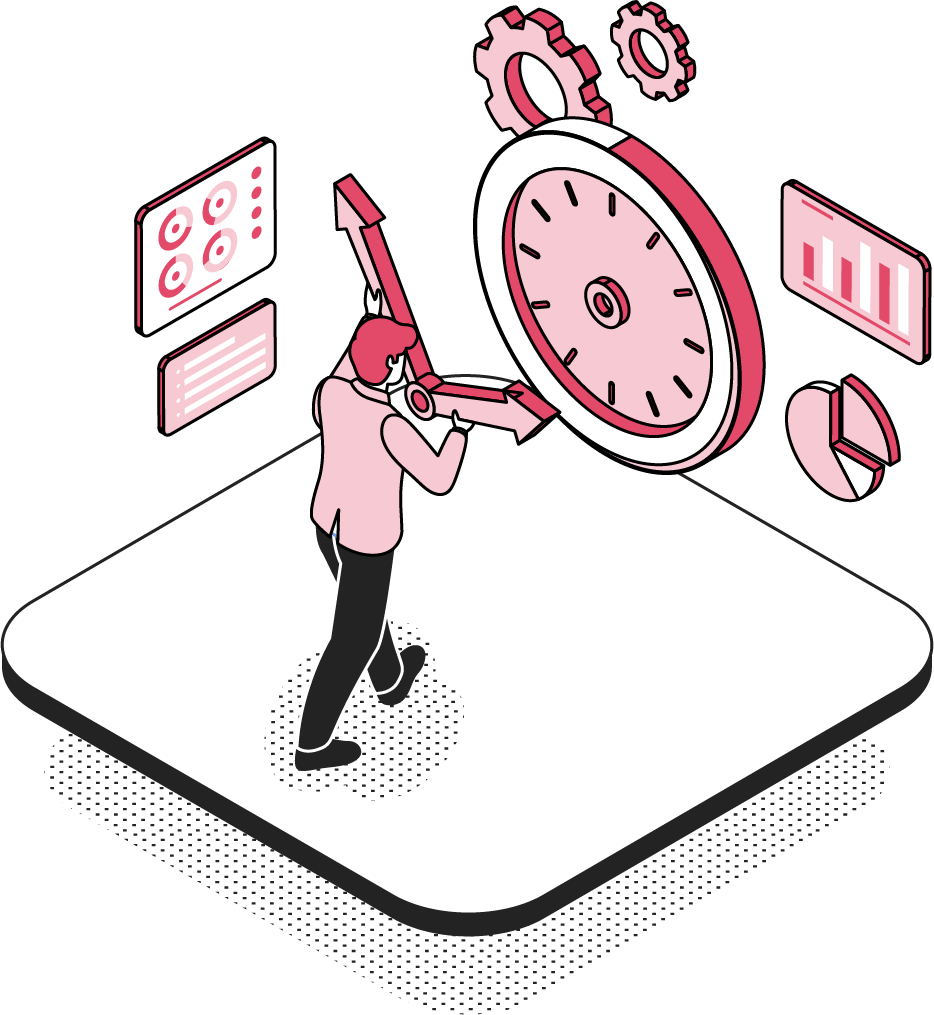
Book A No-Obligation Consultation
If you would like discuss your legal transformation needs, please book a 30 minute free consultation with us.
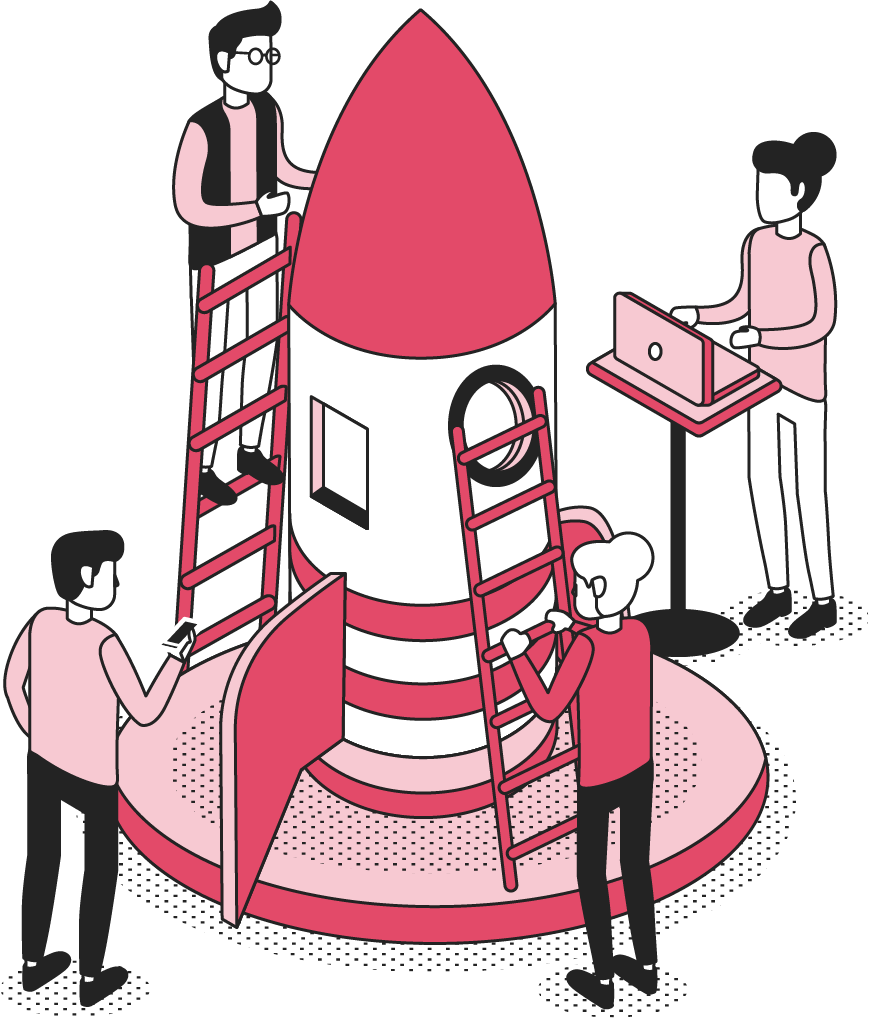
GLS Legal Transformation Boot Camp
Our hugely successful, 10-week long, email-based boot camp on how to effectively transform your legal team.


